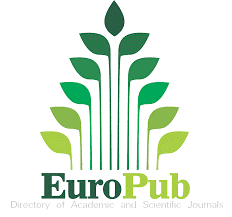Foliar phenology in the transition from dry season to rainy season in the dry forest at the Laipuna Nature Reserve, Loja, Ecuador
Keywords:
leaf phenology , hemispherical photographs, LAI, variance analysis, vegetation, dry forestAbstract
The research arises from the needdocument the phenologicalbehavior of dry forest species in the transition from dry season until the completion of the rainy season in the Laipuna Natural Reserve. Three plots of 0,36 ha each were subdivided in nine subplots of 0.04 ha, different altitudinal floors (1082 meters high, average and low 710 m 855 m). The photograph was taken with a digital camera with wide angle lens, this was located in the center of each subplot, which records chronologically the phenological phases in the transition from dry to rainy season. Hemispheric photographs were analyzed simultaneously for nine sampling points per plot with CAN-EYE software, which allowed determination of percentage of vegetation and Leaf Area Index (LAI). In the lowland plots and similar media, while for the upper zone are the major values that were justified by their functional diversity, with foliar renewal of 57,50% of vegetation and 1,10LAI. In the high plot there are no differences between the two seasons, but for the medium and low plots the highest values found in the dry season are determined. The use of hemispheric photographs is a promising method to determine foliar phenology with a low percentage of error. However, it is susceptible to the influence of climatic factors, such as solar radiation and the presence of rainfallReferences
Aguirre, Z. y Delgado, T. (2005). Vegetación de los bosques secos de Cerro Negro Cazaderos, Occidente de la Provincia de Loja. 9-24 p.
Aguirre, Z. y Kvist L. y Linares R. (2006). Especies leñosas y formaciones vegetales en los bosques estacionalmente secos de Ecuador y Perú. Arnaldoa. 13(2): 324 – 350. ISSN: 1815-8242.
Bettac, H.L. (2014). Leaf Phenology of Deciduous and Abundance of Evergreen Tree Species in a Tropical Dry Forest of South Ecuador. Master Thesis, Georg-August-Universitaet Goettingen.
Chianucci, F. y Cutini, A., (2013). Digital hemispherical photography for estimating forest canopy properties: Current controversies and opportunities. Agricultural and Forest Meteorology 168. 130-139 p.
Cueva, E; Rodas, F. (2006). Conservación participativa del bosque seco Laipuna. Naturaleza & Cultura Internacional.
Tríptico. Loja – Ecuador. Finegan, B. (1992). The management potential of Neotropical secondary lowland rain forest. Forest Ecology and Management. 47. 295-321 p.
Janzen, D. H. (1988). Management of habitat fragments in a tropical dry forest: growth. Annals of Missouri Botanical Garden. Pág. 116.
Mussche, S., Samson, R., Nachtergale, L., De Schrijver, A., Lemeur, R., & Lust, N. (2001). A comparison of optical and direct methods for monitoring the seasonal dynamics of leaf area index in deciduous forests. Silva Fennica, 35(4), 373-384. Disponible en: http://www.metla.fi/silvafennica/abs/sa35/sa354373.htm.
Neill, D. & Jorgensen, P., (1999). Climates. In: P. JORGENSEN & S. LEON- YANEZ, eds. Catalogue of the Vascular Plants of Ecuador. Missouri, USA: Missouri Botanical Garden Press, pp. 8-13.
Opler, P., Gordon, W. & Baker, H., (1980). Comparative Phenological Studies of Treelet and Shrub Species in Tropical Wet and Dry Forests in the Lowlands of Costa Rica. Journal of Ecology (68)1, pp. 167-188.
üPaladines, R. (2003). Propuesta de conservación del bosque seco en el sur del Ecuador. Fundación Científica San Francisco. Internet. Disponible En: http://www.lyonia.org/Archives/Lyonia%204(2)%202003(103230)/Paladines%20P.,%20R.%3B%20Lyonia%204(2)%202003(183186).pdf.
Sierra, R; Cerón, C; Palacios, W Y Valencia, R. (1999). Propuesta preliminar de un sistema de clasificación de vegetación para el Ecuador Continental. Proyecto INEFAN/GEF – BIRF y EcoCiencia Quito, Ecuador.
Vílchez, B.; Chazdon, R.; Alvarado, W. (2008). Fenología reproductiva de las especies del dosel en bosques secundarios y primarios de la región Huetar Norte de Costa Rica y su influencia en la regeneración vegetal. Disponible en: http://www.tec.cr/sitios/Docencia/forestal/Revista_Kuru/anteriores/anterior15/pdf/articulo%202.pdf.
Vílchez, B.; Rocha, O. (2004). Fenología y biología reproductiva del nazareno (Peltogyne purpurea Pittier) en un bosque intervenido de la Península de Osa, Costa Rica, América Central. Kurú: Revista Forestal (Costa Rica) 1(1). 14 p.
Villar, R., Ruiz-Robleto, J., Quero, J. L., Poorter, H., Valladares, F., & Marañón, T. (2004). Tasas de crecimiento en especies leñosas: aspectos funcionales e implicaciones ecológicas. Ecología del bosque mediterráneo en un mundo cambiante, 191-227 p.
Downloads
Published
How to Cite
Issue
Section
License
Copyright (c) 2017 Bosques Latitud Cero

This work is licensed under a Creative Commons Attribution-NonCommercial-ShareAlike 4.0 International License.
This work is published under the Creative Commons Attribution-NonCommercial-ShareAlike 4.0 International (CC BY-NC-SA 4.0) license. This means that users may copy, distribute, and adapt the content, provided that proper credit is given to the authors and the journal. Commercial use of the material is not permitted. Additionally, any derivative work must be distributed under the same license. This license ensures open access to knowledge, promoting the dissemination and reuse of published works for non-commercial purposes, respecting authorship, and ensuring the free circulation of content under fair terms.





























